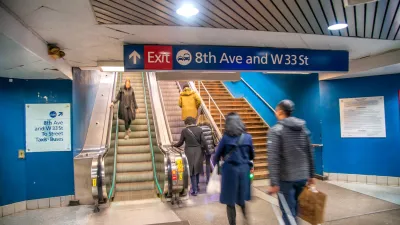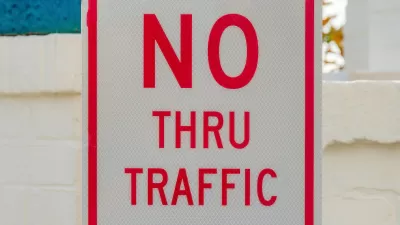For women and other vulnerable groups, navigating the urban space can be fraught with real and perceived dangers.

In an article in The Conversation, Rebecca Wickes describes five methods for making cities safer for women that go beyond just improved lighting and surveillance.
According to research, “Women are keen to see digital interventions across both day and night-time,” particularly real-time transit information and wayfinding. Women also want inclusion in the planning and design process. “If done from the outset, co-design ensures the lived experiences of community members and with the issues faced by communities are factored in.”
Wickes also suggests ‘walking interviews,’ a type of survey that discusses safety and mobility issues while accompanying women on regular trips. “By accompanying women on foot and discussing specific locations, we get a holistic understanding about how women move through these public places, or avoid them, and why.” Similarly, “Understanding the way women perceive their communities is key to creating safer spaces.”
FULL STORY: Urban planning has long ignored women’s experiences. Here are 5 ways we can make our cities safer

Planetizen Federal Action Tracker
A weekly monitor of how Trump’s orders and actions are impacting planners and planning in America.

Congressman Proposes Bill to Rename DC Metro “Trump Train”
The Make Autorail Great Again Act would withhold federal funding to the system until the Washington Metropolitan Area Transit Authority (WMATA), rebrands as the Washington Metropolitan Authority for Greater Access (WMAGA).

DARTSpace Platform Streamlines Dallas TOD Application Process
The Dallas transit agency hopes a shorter permitting timeline will boost transit-oriented development around rail stations.

Supreme Court Ruling in Pipeline Case Guts Federal Environmental Law
The decision limits the scope of a federal law that mandates extensive environmental impact reviews of energy, infrastructure, and transportation projects.

Texas State Bills to Defund Dallas Transit Die
DART would have seen a 30% service cut, $230M annual losses had the bills survived.

Bikeshare for the Win: Team Pedals to London Cricket Match, Beats Rivals Stuck in Traffic
While their opponents sat in gridlock, England's national cricket team hopped Lime bikes, riding to a 3-0 victory.
Urban Design for Planners 1: Software Tools
This six-course series explores essential urban design concepts using open source software and equips planners with the tools they need to participate fully in the urban design process.
Planning for Universal Design
Learn the tools for implementing Universal Design in planning regulations.
Roanoke Valley-Alleghany Regional Commission
City of Mt Shasta
City of Camden Redevelopment Agency
City of Astoria
Transportation Research & Education Center (TREC) at Portland State University
US High Speed Rail Association
City of Camden Redevelopment Agency
Municipality of Princeton (NJ)





























